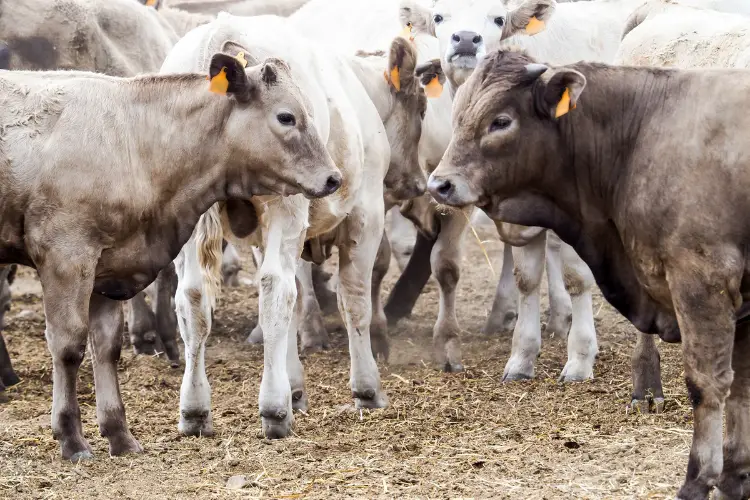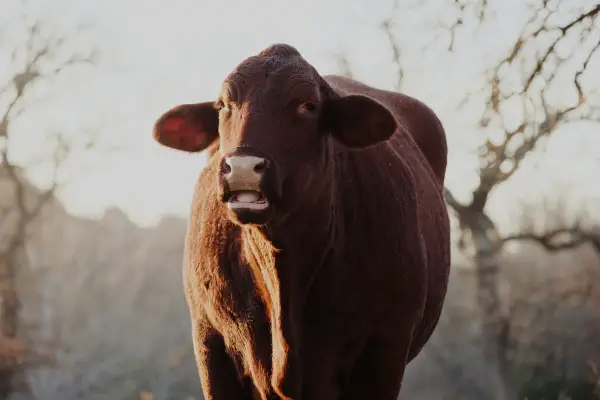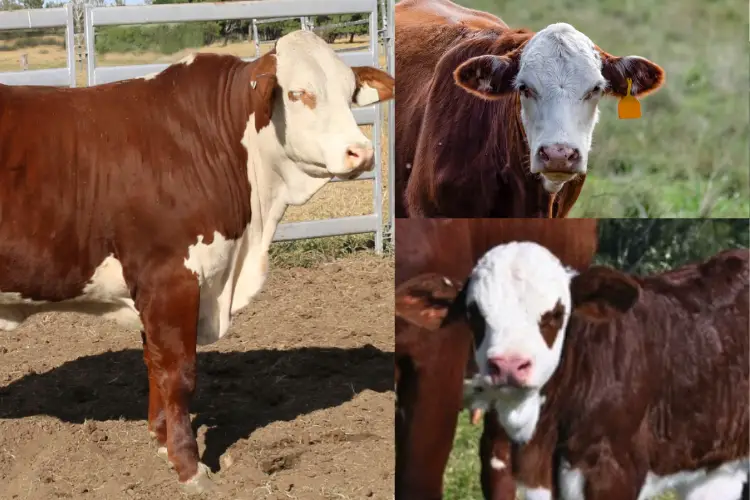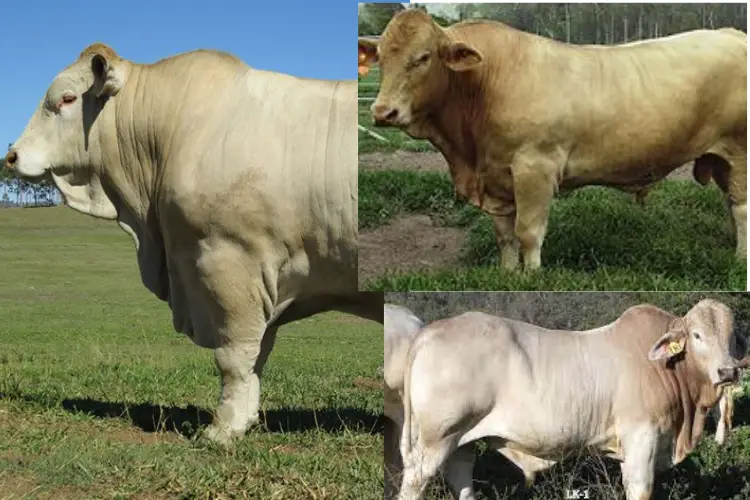In the ever-evolving world of livestock production, composite cattle breeds have emerged as a game-changer, offering a unique combination of desirable traits that can benefit both commercial and seedstock operations.
These innovative breeds are the result of carefully planned crossbreeding programs that blend the strengths of various purebred lines, creating a genetic potpourri that can adapt to diverse environments and production systems.
In this blog post guide, we’ll explore the world of composite cattle breeds, their origins, advantages, and some of the most popular examples.
Understanding Composite Cattle Breeds
Before delving into the specifics of composite breeds, it’s essential to understand what they are and how they differ from traditional purebred and crossbred cattle.
A composite breed is a distinct breed created by combining two or more purebred breeds through a systematic crossbreeding program. Unlike traditional crossbreeding, where the offspring are not consistently bred back to the same breeds, composite breeds are carefully developed and maintained to establish a uniform and consistent genetic makeup.
The primary goal of composite breed development is to leverage the strengths of different purebred lines while mitigating their weaknesses. By combining desirable traits such as growth rate, carcass quality, maternal ability, and adaptability, composite breeds aim to create a well-rounded and efficient animal that can thrive in various production environments.

Advantages of Composite Cattle Breeds
Composite cattle breeds offer several advantages over traditional purebred and crossbred animals, making them an attractive choice for many livestock producers:
- Hybrid Vigor: One of the primary benefits of composite breeds is the phenomenon known as “hybrid vigor” or “heterosis.” This refers to the increased performance and productivity observed in crossbred offspring compared to their purebred parents. Hybrid vigor can result in improved traits such as increased growth rates, better feed efficiency, higher fertility, and enhanced disease resistance.
- Adaptability: By combining genetics from diverse breeds, composite cattle can be tailored to excel in specific environments and production systems. For example, a composite breed developed by crossing a heat-tolerant breed with a breed known for its growth performance can potentially thrive in hot and humid climates while maintaining desirable growth characteristics.
- Uniformity: Unlike traditional crossbreeding, where the offspring can exhibit a wide range of phenotypic variation, composite breeds are bred to maintain a consistent and uniform appearance and performance. This uniformity can be advantageous for commercial operations, as it ensures a consistent product for the market.
- Maternal Ability: Many composite breeds are developed with a focus on improving maternal traits, such as calving ease, milk production, and longevity. This can lead to more efficient and productive cow herds, reducing the need for frequent replacements and improving overall herd profitability.
- Carcass Quality: By incorporating purebred lines known for their superior carcass traits, composite breeds can offer improved meat quality, yield, and marbling, making them desirable for both commercial and seedstock operations.
Popular Composite Cattle Breeds
While there are numerous composite breeds around the world, here are some of the most popular and widely recognized examples:
1. Brangus
The Brangus is one of the pioneering composite breeds, developed by crossing Brahman and Angus cattle. This breed combines the heat tolerance and insect resistance of the Brahman with the superior carcass quality and growth performance of the Angus.
Brangus cattle are well-suited for hot and humid environments and are known for their adaptability, maternal traits, and versatility in both commercial and seedstock operations.

2. Beefmaster
The Beefmaster is a composite breed created by crossing Brahman, Shorthorn, and Hereford cattle. It was developed in the early 20th century with the goal of combining the hardiness and adaptability of the Brahman with the superior carcass traits and maternal abilities of the British breeds.
Beefmasters are known for their efficiency, heat tolerance, and their ability to thrive in various environments, making them a popular choice for both commercial and seedstock operations.

3. Santa Gertrudis
Originating in South Texas, the Santa Gertrudis is a composite breed developed by crossing Brahman and Shorthorn cattle. This breed combines the heat tolerance and insect resistance of the Brahman with the superior growth and carcass traits of the Shorthorn.
Santa Gertrudis cattle are well-adapted to hot and humid climates and are valued for their efficient weight gain, fertility, and longevity.

4. Braford
The Braford is a composite breed created by crossing Brahman and Hereford cattle. It was developed to combine the heat tolerance and hardiness of the Brahman with the superior carcass qualities and maternal abilities of the Hereford.
Braford cattle are known for their adaptability to various environments, their efficient weight gain, and their desirable carcass traits.

5. Charbray
The Charbray is a composite breed resulting from the crossbreeding of Charolais and Brahman cattle. This breed combines the muscling, growth rate, and carcass quality of the Charolais with the heat tolerance and hardiness of the Brahman.
Charbray cattle are well-suited for hot and humid environments and are valued for their efficient weight gain, maternal traits, and desirable carcass characteristics.

6. Red Brangus
As the name suggests, the Red Brangus is a composite breed derived from the Brangus by incorporating Red Angus genetics. This breed retains the heat tolerance and adaptability of the Brangus while adding the desirable carcass traits and growth performance associated with the Red Angus.
Red Brangus cattle are known for their hardiness, fertility, and their ability to perform well in various production systems.
Comparison Table: Composite Cattle Breeds
To help you better understand the differences between some of the most popular composite cattle breeds, here’s a handy comparison table:
| Breed | Breed Composition | Notable Traits |
|---|---|---|
| Brangus | Brahman x Angus | Heat tolerance, insect resistance, carcass quality, growth performance |
| Beefmaster | Brahman x Shorthorn x Hereford | Hardiness, adaptability, carcass traits, maternal ability |
| Santa Gertrudis | Brahman x Shorthorn | Heat tolerance, insect resistance, weight gain, fertility, longevity |
| Braford | Brahman x Hereford | Adaptability, weight gain, carcass traits |
| Charbray | Charolais x Brahman | Heat tolerance, growth rate, carcass quality, maternal traits |
| Red Brangus | Red Angus x Brangus | Heat tolerance, carcass traits, growth performance, fertility |
Please note that this table provides a general overview, and individual animals within each breed may exhibit variations in their traits and performance.
Conclusion
Composite cattle breeds represent a significant advancement in the livestock industry, offering a unique combination of desirable traits tailored to meet the diverse needs of commercial and seedstock operations. By leveraging the strengths of various purebred lines through carefully planned crossbreeding programs, these innovative breeds offer advantages such as hybrid vigor, adaptability, uniformity, improved maternal ability, and superior carcass quality.
While the examples provided in this guide represent some of the most well-known composite breeds, there are many others being developed and refined around the world to suit specific production environments and market demands. As the industry continues to evolve, we can expect to see even more innovative composite breeds emerge, providing livestock producers with a wider range of options to enhance their operations’ productivity and profitability.
When considering composite cattle breeds for your operation, it’s crucial to research and understand the specific traits and characteristics of each breed, as well as their suitability for your production goals, environment, and management practices. By making an informed decision and implementing proper herd management strategies, you can unlock the full potential of these versatile and efficient bovine breeds.


